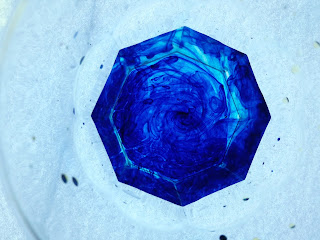Reflections on Creativity. What stays and what disappears during the school years.
Reflections on Creativity. What stays and what disappears during the school years.
Considering the natural flow of children’s creative unfurling, we can see
how the delight and excitement of mark making accompanies the child through
time. The awakening of perception skills and language enable the child to
experiment and draw satisfaction in using scribbles and drawing to enhance this
interaction with the environment. Cognitive developments selects what is
expressed in ways that show the child’s learning path. As Kindler (2010) demonstrates, artistic
development is dynamic and is constantly expressing the present moment and
ready to leap forward redefining itself through the child’s interaction with
the environment and his/her visions. Furthermore, she notes how researches
Jessica Davis, Howard Gardner and Ellen Winner (2012) affirm that artistic
ability of young children is stronger than that of older children. (Kindler,
2010) A strong and powerful drive enables the young child to produce striking
artwork in kindergarten. Colour, shape, line and form run and move as acrobats
free from stereotypes. As David Perkins (1981), states in his Snowflake Model of Creativity, mental
flexibility helps find different approaches towards meeting the goals intended.
This is what the young child thrives and free from stereotypes wanders
searching for answers. No less important is the inner motivation that drives
the child to practice constantly maybe drawing the saw object times and times
again until the biological clock ticks the hour of innovation and the child
moves on carrying his splendid workload of expertise to his/her next
developmental phase.
Ken Robinson (2015) describes children as natural born learners.
“We are born with all the skills, all the basics we need. Babies and very
young children are incredibly intuitive, naturally creative and deeply
curious.”
The early years are a grand celebration of natural learning, where the
impossible seems possible, where simple objects become the imaginable and round
every corner there is the unexpected element of magic and transformation.
Then school starts. A curtain is drawn. In most cases no more light shines
through and the earlier dynamic phase is obscured by pre-selected activities,
themes and topics the core subjects of literacy and numeracy take over leaving
the child hungry for a wedge of individuality. Paul Klee (1939) noted that the
uncorrupted individuality is now corrupted with rewards and good marks for
complying with the standard rules.
Creativity seems to be asked to fall asleep, to be tucked away and drawn
out only when summoned. As Leslie Owen,(2017) states creativity is stolen away
and she makes a clear list based on the research of Goleman, Kaufman and Ray
(1962) where the thieves are: evaluation, rewards, competition, over
control, restricting choice and I would like to add, compliance.
The fledgling artists could be
compared to the story of Sleeping Beauty where creativity in the arts is
wrapped in thorns and brambles. The handsome prince could be dressed up as the
Reggio Emilia Educational Approach. The main characters being a group of
enlighten teachers and pedagogists that bless the artistic drive with renewed
life.
Malaguzzi’s Hundred Languages of Children (1998) empowered children’s
creativity by creating an innovative educational approach that put the child in
the centre of its learning path giving him/her full rights. Teachers were
supported by artists in the newly created Atelier. The child’s creativity was
asked to flourish and encouraged to expand.
Born as kindergartens the Reggio Schools now provide education all the way
through the primary years. This has further reinforced the pedagogy of
creativity through child-initiated interests. Children’s creative skills in all
areas of a school curriculum find support and encouragement. The dormant phase
is no longer an obvious phase. Children become artists in their own right. Vea
Vecchi (2010) describes the young artist as connected with the processes of
learning who is able to build relationships across disciplines, making the
development of understanding a natural flow between research, experimentation
and theory.





Comments
Post a Comment